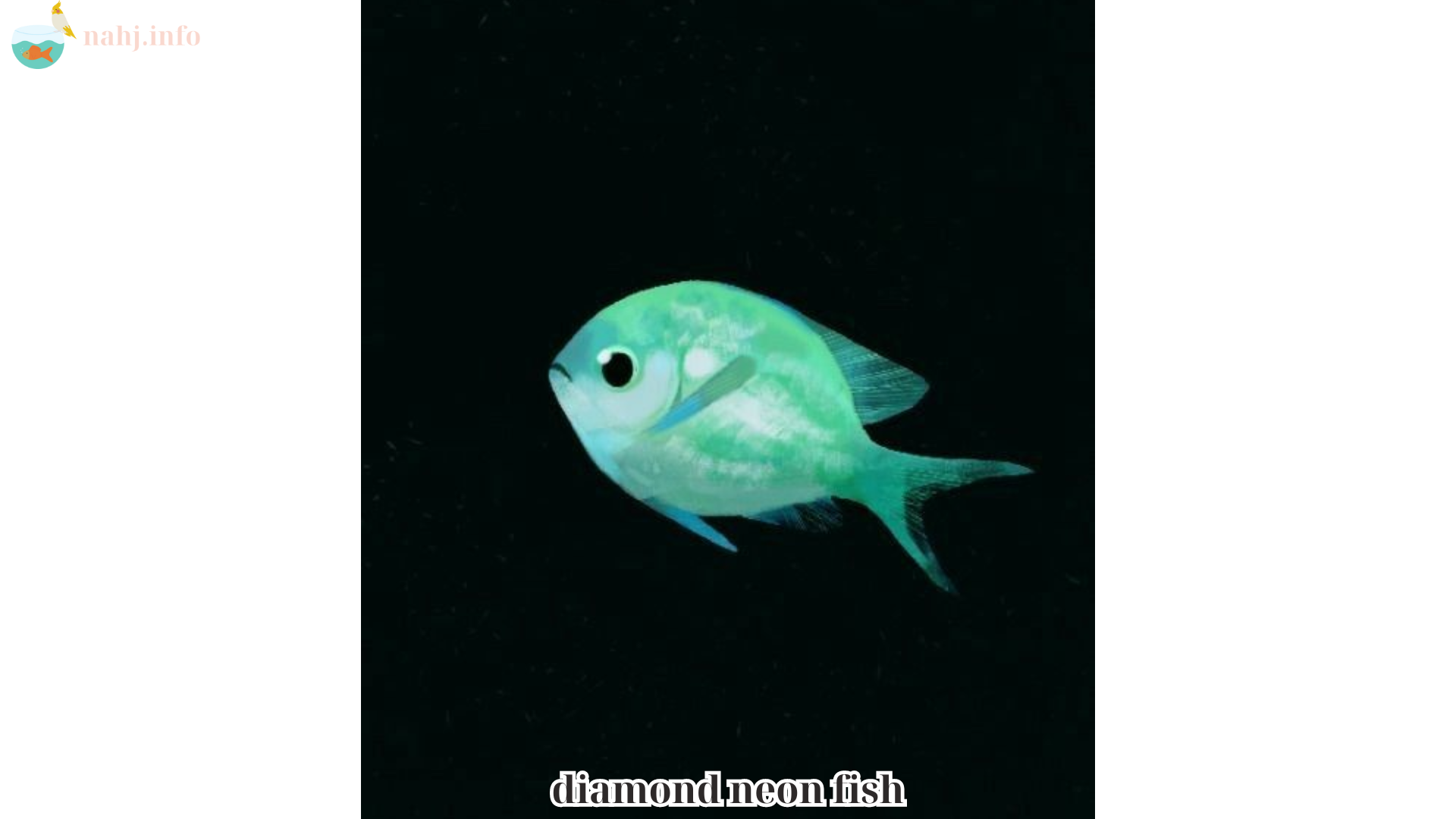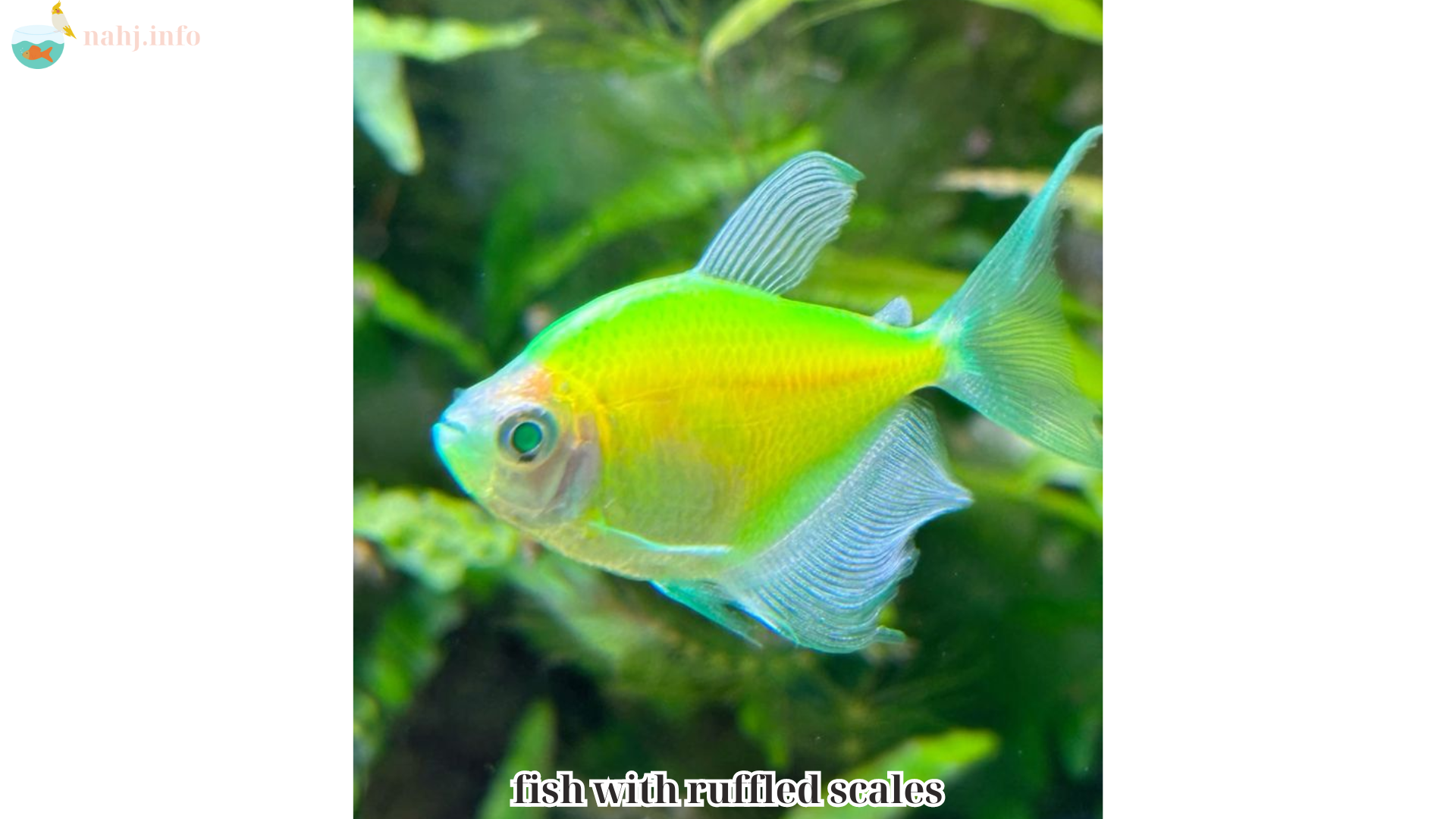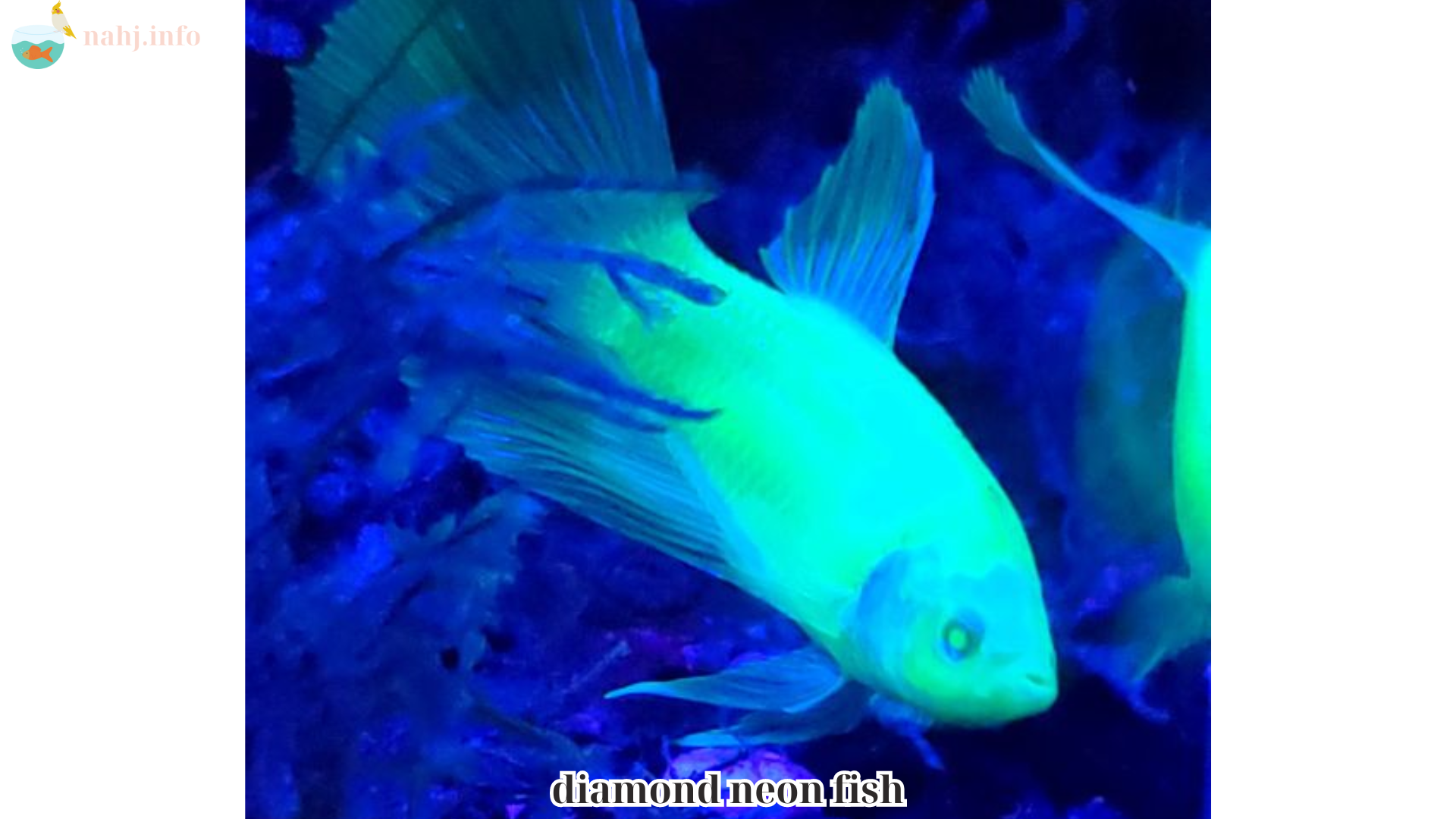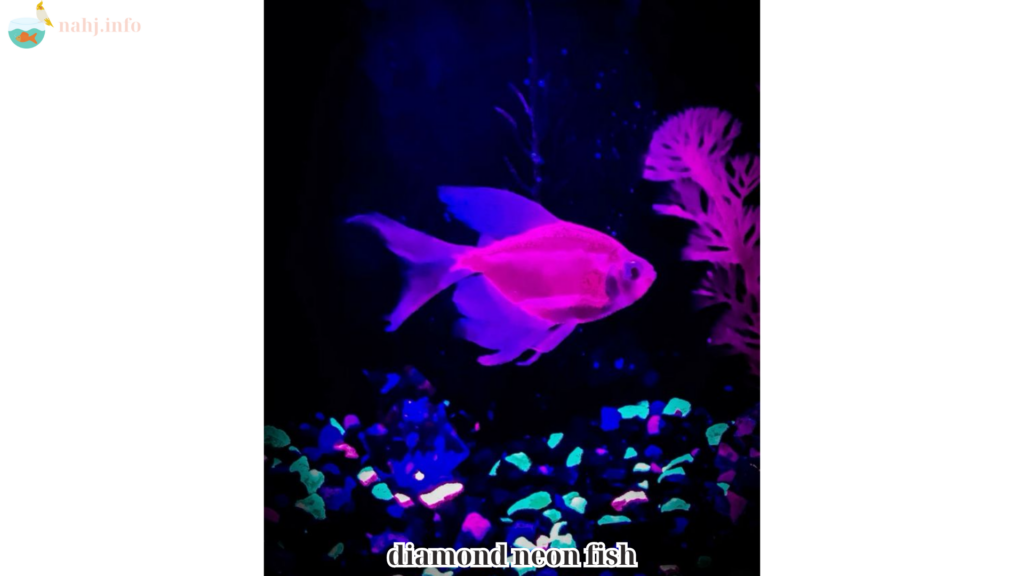The Diamond Neon Fish, also known as Diamond Tetra or Diamond Head Neon Tetra, is a popular and visually stunning species among aquarium enthusiasts. Known for their shimmering scales and vibrant colors, these fish can add a touch of elegance to any aquarium. In this comprehensive guide, Nahj will explore everything you need to know about Diamond Neon Fish, including their origin, physical characteristics, tank requirements, diet, breeding, and care.
Table of Contents
ToggleDiamond Neon Fish: A Comprehensive Guide

Diamond Neon Fish (Paracheirodon innesi var.) are a selectively bred variant of the Neon Tetra, which is native to the freshwater streams and rivers of South America, particularly in the Amazon Basin. These fish are adapted to living in slow-moving, shaded waters with dense vegetation.
Physical Characteristics
Appearance
Diamond Neon Fish are celebrated for their striking appearance. They have a shimmering body with iridescent scales that reflect light, giving them a “diamond” effect. Their body color ranges from blue to green, and they have a bright red stripe running from their mid-body to the tail, similar to the classic Neon Tetra. The head area often appears to have a diamond-like sparkle, especially under aquarium lighting.
Size
These fish are relatively small, typically reaching a length of 1.5 to 2 inches (3.8 to 5 cm) when fully grown. Their petite size makes them ideal for smaller tanks and community aquariums.
Tank Requirements
Tank Size
While Diamond Neon Fish are small, they thrive in groups, so it is essential to provide a tank that can accommodate a school of at least six individuals. A minimum tank size of 20 gallons is recommended to ensure they have enough space to swim and exhibit natural behaviors.
Water Parameters
- Temperature: 72-80°F (22-27°C)
- pH Level: 6.0-7.5
- Water Hardness: Soft to moderately hard, 2-10 dGH
Maintaining stable water parameters is crucial for the health of Diamond Neon Fish. Sudden fluctuations can stress the fish and lead to health problems.
Filtration and Aeration
Good filtration is essential to keep the water clean and free from harmful toxins. A gentle filter that does not create strong currents is ideal, as Diamond Neon Fish prefer slow-moving waters. Additionally, aeration can help maintain oxygen levels, especially in densely planted tanks.
Substrate and Decorations
A dark substrate, such as fine gravel or sand, can help accentuate the vibrant colors of Diamond Neon Fish. Including plenty of live plants, driftwood, and rocks will mimic their natural habitat and provide hiding spots, reducing stress and promoting natural behavior.
Lighting
Moderate lighting is suitable for Diamond Neon Fish. Too much light can cause stress, while too little may affect their coloration. Adjustable LED lights are a good option, allowing you to control the intensity and create a natural day-night cycle.
Diet and Feeding

Diamond Neon Fish are omnivores and have a varied diet in the wild, consisting of small invertebrates, plant matter, and organic debris. In captivity, a balanced diet is essential to maintain their vibrant colors and overall health.
Suitable Foods
- Flake Food: High-quality flake food designed for tropical fish provides essential nutrients.
- Pellets: Small, sinking pellets can supplement their diet.
- Live Foods: Offer live foods like brine shrimp, daphnia, and bloodworms occasionally to provide variety and enrichment.
- Frozen Foods: Frozen versions of live foods are a convenient alternative.
Feeding Schedule
Feed Diamond Neon Fish small amounts two to three times a day. Only provide as much food as they can consume within a few minutes to prevent overfeeding and maintain water quality.
Breeding Diamond Neon Fish
Breeding Diamond Neon Fish can be challenging but rewarding for experienced aquarists. Here are the steps to encourage successful breeding:
Setting Up a Breeding Tank
- Tank Size: A small, separate breeding tank of around 10 gallons is ideal.
- Water Conditions: Soft, slightly acidic water with a temperature of 75-80°F (24-27°C) is optimal.
- Substrate and Plants: Use a fine mesh or breeding mop as a spawning medium and provide plenty of fine-leaved plants for egg deposition.
- Lighting: Low lighting encourages spawning behavior.
Conditioning the Breeders
Select a healthy pair or small group of Diamond Neon Fish and condition them with high-quality live and frozen foods for about a week. This will help them build up energy reserves for spawning.
Spawning Process
Once the breeders are introduced to the breeding tank, they should begin spawning within a few days. The female will scatter eggs among the plants or spawning medium, and the male will fertilize them. After spawning, remove the adults to prevent them from eating the eggs.
Raising the Fry
Eggs will hatch in about 24-36 hours, and the fry will become free-swimming within a few days. Feed the fry infusoria or commercially available liquid fry food until they are large enough to accept baby brine shrimp or finely crushed flakes. Keep the water clean and stable to ensure their survival and growth.
Health and Disease Prevention
Diamond Neon Fish are generally hardy but can be susceptible to common fish diseases if not properly cared for. Here are some tips to keep them healthy:
Regular Maintenance
- Perform regular water changes (20-30% weekly) to maintain water quality.
- Monitor water parameters and keep them stable.
- Clean the tank and filter regularly to prevent the buildup of harmful substances.
Common Diseases
- Ich: Also known as white spot disease, characterized by white spots on the body and fins. Treat with a suitable ich medication.
- Fin Rot: Caused by bacterial infections, leading to frayed or disintegrating fins. Improve water quality and use antibacterial treatments.
- Neon Tetra Disease: Affects the Neon Tetra family, causing color loss and muscle degeneration. There is no cure, so prevention through quarantine and proper tank maintenance is crucial.
Conclusion

Diamond Neon Fish are a beautiful and captivating addition to any aquarium. By providing them with the right environment, diet, and care, you can enjoy their vibrant colors and lively behavior for years to come. Whether you’re a seasoned aquarist or a beginner, these stunning fish can bring a touch of brilliance to your underwater world.
Related Posts:
- Flowerhorn Fish Lifespan: What You Need to Know for…
- Understanding Fish with Ruffled Scales: Causes,…
- Blue Striped Fish: A Vibrant Addition to Your Aquarium
- How to raise betta fish to have beautiful colors?
- White Cloud Fish: A Detailed Guide to Beautiful…
- Signs of Guppies About to Spawn: A Detailed Guide to…

